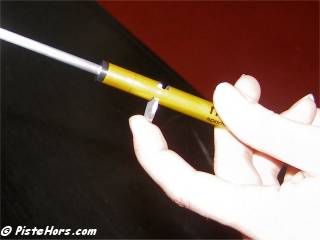
Gear > Avalanche Gear > Probes
Probes and shovels are often ignored as superfluous, or something to be bought later. But they are vital pieces of kit. Issue 100 of Neige et Avalanches, the journal of the French Avalanche Research institute (http://www.anena.org/) reports on an exercise. A search area of 200 x 300 meters was laid out with two avalanche transceivers buried 6 meters apart and 1 meter deep, covered by a pieces of wood to represent the approximate shape of a human. Teams of 5 people were organised, given basic training and equipped with snow shoes.
| Equipment | Time |
|---|---|
| Transceiver, Probe and Shovel | 16 minutes |
| Transceiver and Shovel | 26 minutes |
| Transceiver and Probe | 50 minutes |
| Transceiver | 60+ minutes |
The times given are from the first signal being detected to the victim being recovered. It should be remembered that a victim should ideally be rescued within 15 minutes of being buried to have the most chance of survival. Where the rescue party only had avalanche transceivers they took more than an hour to dig the 1 meters using their snow shoes. The rescuers found it quite difficult to localise victims without a probe, the searcher equipped with the transceiver had to repeatedly search with a beacon as the hole was excavated in order to guide the rescuers.
The above exercise used inexperienced people. A trained rescuer would expect to do considerably better, in the order of 5 minutes to find a victim. An avalanche probe is used to localise a buried victim and will give their exact depth. The deeper the victim is buried the larger the hole that will need to be dug. This should be started at a distance equal to the depth of the victim. Without this precise indication the hole will either be larger than necessary or too small and will need enlarging. Both will waste precious moments. Once the victim's body has been found the probe should be left in place as a guide. Remember to probe, and to dig, at 90 degrees to the slope and not vertically. This gives the least amount of digging and will be location given by the transceiver.

The depth of burial is also important when organising a search for multiple victims. Where there are a limited number of rescuers it is better to dig out the victim closest to the surface first. If they are not too badly hurt they may even be able to assist in the subsequent search. Experience has shown that people buried below 1.5 meters of snow have a poor chance of survival.
Probes come in a variety of lengths, from around 220cm to 600cm and made from different material. For off-piste and backcountry touring, a 220cm or 240cm aluminium probe is the most suitable. Piste patrol generally favour steel probes as they will be conducting many organised probe searches that will wear out aluminium probes. Longer probes are generally used by piste patrols for probing deep avalanches for body recovery.
We particuarly like the Ortovox and Nic-Impex systems for rapidly assembling and locking collapsible avalanche probes. Using clever joints and a quick locking cord the user simply has to flick the parts open then pull tight on the cord lock, all in a single operation.

<< Avalanche Transceivers | Avalanche Gear | Shovels >>